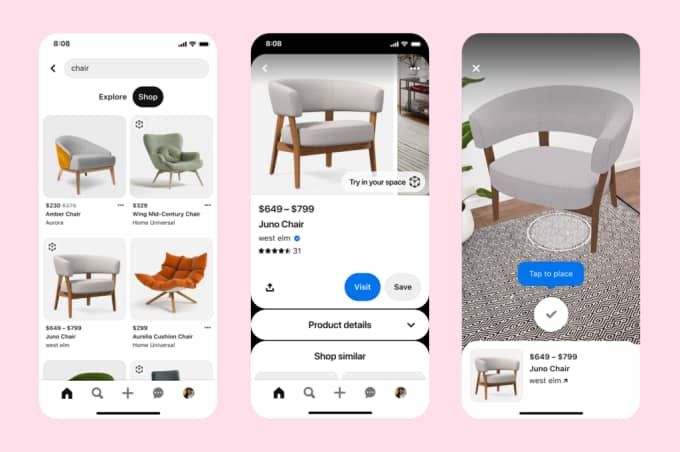Henry Blodget once said something that always stuck with me. Paraphrasing, he said that advertising on Facebook is like advertising at a party… while advertising on Google is like advertising at a store. Setting aside the benefits of Facebook ads and audience targeting, Blodget’s point is all about user intent.
This isn’t a new concept, as user intent is a well-known search-marketing driver. And that intent inflects with certain types of search, such as local (as indicated by explicit geo-modifiers or mobile orientation). But Google isn’t alone… a handful of other players in the marketing landscape enjoy high user intent.
One of those players is Pinterest. Indeed, product discovery is something that the company has conditioned into its use case from the beginning (Instagram continues to grow into a similar use case). And it has only gotten started in monetizing that shopping intent, taking baby steps to preserve the UX.
Finding the Flywheel
With that backdrop, Pinterest is out this week with its latest shopping features to engender commerce within its app. This round of updates is all about merchant-facing features that let them better facilitate commerce. The idea is that this can attract merchants to the platform and get the flywheel spinning.
Specifically, the new features include product tagging on Pins and a new API for shopping. Taking those one at a time, product tagging lets merchants make otherwise-static pins shoppable. When tags are active, products that show up in a given pin can be clicked/tapped for transactional options.
The goal here is to expand Pinterest’s place in the marketing funnel. To that end, product tags are one way to bring Pins from an upper-funnel awareness medium to a lower-funnel direct response medium. Instagram recently did something similar by launching product tags for peak shoppability.
On to the second big update, the Pinterest API for Shopping puts Pinterest functionality into the hands of merchants so that they can drop it into their own environments and commerce channels. The functions that come with the API include catalog management and product metadata features.
In plain terms, these features help merchants have more functional and accurate product listings in their digital storefronts. These things are normally hard to manage for busy SMBs. So Pinterest is handing over its framework to lower barriers. It’s already seeing 97 percent product accuracy in merchant trials.
All in all, the API gives merchants a functioning storefront on their own sites and apps, rather than reinventing the wheel with something home-grown (and likely inferior). This is the same democratized eCommerce principle that has made players like Shopify and WooCommerce so popular.
Chicken & Egg
As noted, these Pinterest updates are all about merchant-facing tools. But they align with user-facing shopping features that Pinterest continues to roll out. You can think of this as a one-two punch: First get users conditioned on buying things on Twitter, then give merchants more tools to sell their wares.
Then things ratchet up from there (back to the flywheel), as Pinterest continues to grow both sides of that supply/demand equation in step. There’s a classic chicken & egg challenge in this process, but it can be executed gradually to balance both sides of the equation, as Pinterest has done over the years.
Notably, all the above falls under the umbrella of the ever-growing shoppability trend. In our ongoing coverage, we tend to hear more from bigger players like Instagram and Shopify. But Pinterest is a bit of a sleeping giant in the Shoppability landscape. After all, it has an abundance of user intent on its side.




